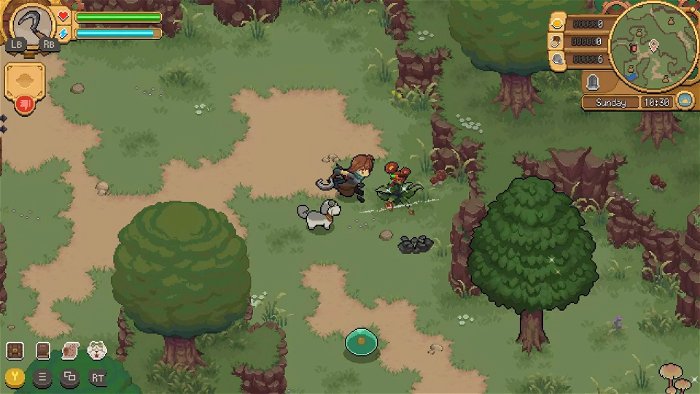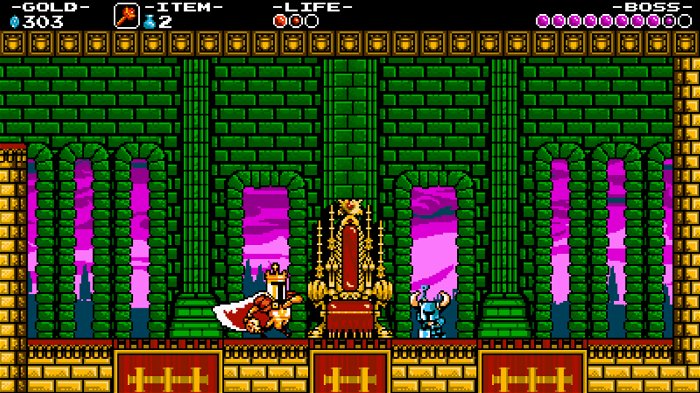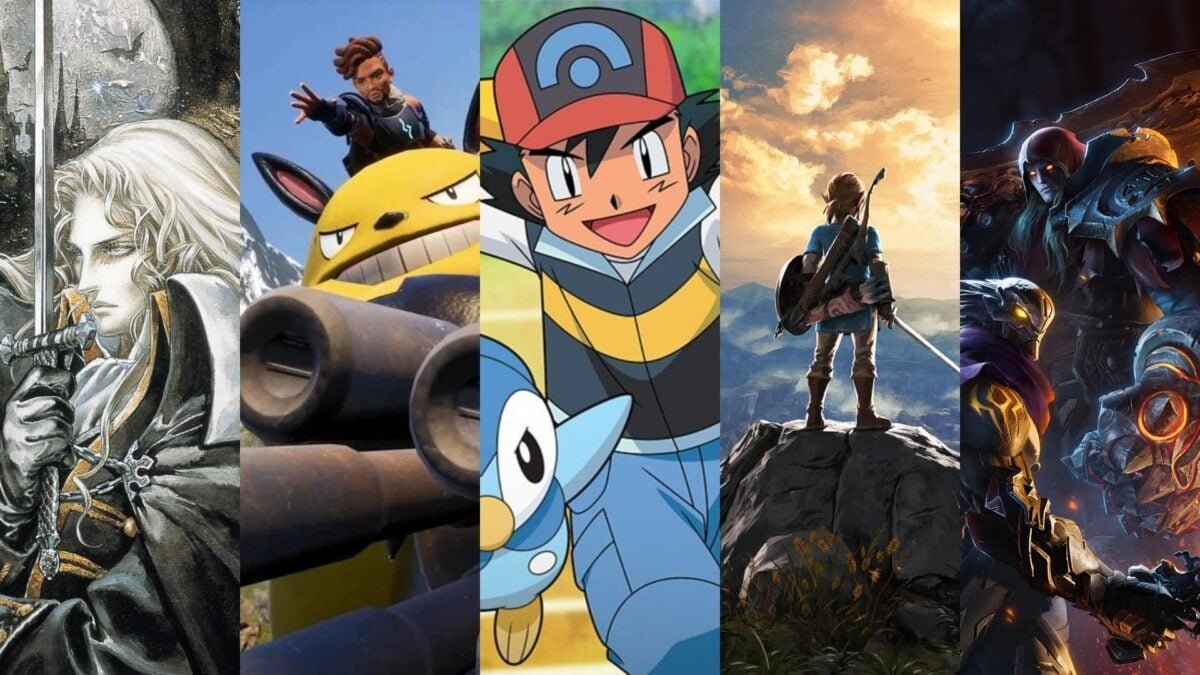With the release of Palworld there’s been a certain degree of conversation about “inspiration.” Palworld has garnered a fair amount of praise for its visual style and varied gameplay, but its also courted a fair amount of criticism for what some consider to be a “blatant ripoff” of Pokemon’s aesthetic and gameplay. While I think it’s easy to write off games that are similar to others as derivative—in the past, I certainly have—I’ve recently evolved my thinking on this subject.
After all, imitation is the most sincere form of flattery, and so many good games were inspired by something else—Metroid drew inspiration from Alien, Castlevania: Symphony of the Night drew inspiration from Super Metroid, and The Legend of Zelda clearly inspired Darksiders. In quite a few of my reviews, I’ve said that I’ve been a lot more interested in the Indie space as opposed to the “AAA” sphere. I bring this up because it’s usually the Indie space where you see a lot of direct inspiration, as up-and-coming developers make games influenced by the ones they loved growing up.
“After all, imitation is the most sincere form of flattery, and so many good games were inspired by something else.”
However, something that usually disappoints me with a game is where you can see solid inspiration but sup-par execution. I’ve been a video game critic for almost 10 years now, and while that certainly doesn’t make me an expert on game design, I think I’ve reasonably come to understand what works and what doesn’t work. With that in mind, I wanted to share my thoughts on the matter. To start…
Don’t Be Afraid to Be Inspired
I was doing a little bit of research before writing this article when I came upon a Reddit post from a year ago titled, “The Terrifying Reality of Taking Inspiration from Other Games.” Honestly, this broke my heart a little bit because there really shouldn’t be any reason to be afraid to be inspired by other games. While yes, there’s a fine line between inspiration and outright theft, I truly believe if you approach a game with honest intentions, both players and critics will see the difference.

Like a lot of critics, I’ve reviewed plenty of games using the critical shorthand, “It’s similar to [X Game],” or “It’s like [X] but…” It may seem reductive, but the reason it’s become a shorthand at all is because it’s easier to communicate what a game is like by comparing its gameplay mechanics to another, and that’s not always a bad thing. I loved Potion Permit because it was similar to Rune Factory, or how Tinykin felt like Pikmin combined with Banjo & Kazooie.
I think the idea that every piece of media needs to be a requisite amount of “original” is something of a fabrication. Almost every good thing was born out of a love of something else so don’t stress about making your game TOO MUCH like something else. It’s okay to borrow the elements that work and find ways to make them your own as long as you’re injecting your game with enough of its own personal identity. This leads me to my next point…
Lean Into Your Inspiration
This may seem similar to my point above, but I think there’s a key difference. Being too afraid to be inspired might lead you to think your work needs to be wholly original—tweaking your gameplay so it doesn’t end up being “too much like [X] game” or trying as hard as you can to make something unlike anything that’s ever been made. But it’s okay to lean into your inspirations.
“There’s no shame in wearing your inspiration on your sleeve, so long as you make it your own.”
One of the funnier comments I’ve received for one of my criticisms was for Death’s Gambit Afterlife, where I had said, “If you want to be Dark Souls, just BE Dark Souls,” to which one of the developers responded, “We don’t want to just BE Dark Souls. What’s the point in that?” Well, I would argue: because Dark Souls is one of the best games ever made? There’s no shame in wearing your inspiration on your sleeve, so long as you make it your own.
Another perfect example of this is Lies of P. Neowiz may not have intended for their game to be as like Bloodborne as it is, but you certainly wouldn’t get that from playing it. But what Lies of P borrows most from Bloodborne is theme and vibe, and that’s totally fine because the rest of the game is so clearly their own take on SoulsBorne staple mechanics. And even when it’s not, it’s still totally fine—Salt and Sacrifice is basically Dark Souls by way of Monster Hunter, and I loved it!
Don’t Fix What Ain’t Broke
Good game mechanics work for a reason, so there’s no shame in using what works. Something I spoke about in my Born of Bread review was for how much the game borrowed from Paper Mario—its very clear inspiration—there were a few ways it missed why those games worked. As a result, it had Paper Mario’s action command-driven combat, but with none of the actions feeling connected to the characters or varied in interesting ways.

I’ve said this before, and I’ll say it again: no one owns the copyright to gameplay mechanics. To return to that Reddit thread, the user said, “I was working on the Jump code, and I found myself thinking ‘Hm…The gravity rate and jump height feels too similar to Hollow Knight.’” Personally, I really don’t think it’s a problem if a game feels too mechanically similar to another.
For example, Shovel Knight borrows gameplay almost whole-cloth from Ducktales, Mega Man and Mario 3 and it’s all the better for it because it took what worked and built a unique game around it. Similarly, one of the things I loved about Aragami was how it borrowed Tenchu’s methodical stealth gameplay and built its own unique systems around it. However, this isn’t without some caveats, namely…
Make Sure You Understand Your Inspiration
Recently, I reviewed The Cub—a game that claimed on its Steam page to be “inspired by classic SEGA games of the 90s—The Jungle Book, Aladdin, Lion King—but with modern twists and ideas.” However, the only “modern twists” it seemed to have were borrowing ideas from Limbo and Inside, i.e.; a child being pursued by hostile adults in a hazardous world. Where I thought the game stumbled was by jamming those two disparate styles together, rather than building something that could’ve been truly inventive.
“No Inspiration Without Evolution.”
The Cub takes two different types of inspiration, and crams them together, rather than building something inventive off the two ideas. So instead of a fast-paced precision platformer about a child raised by wolves being hunted by malicious adults, you get a game that has the components for “parkour,” but moves at the same pace Limbo did—and Limbo’s pace was deliberate for its movement.
Certain gameplay elements work for a reason, but you need to understand the WHOLE reason they work—not just how it works and feels mechanically, but how it works thematically or how it gels with your character and game world. It’s worth remembering that people criticize Resident Evil’s control and camera angles, but those were deliberately implemented to make the player feel helpless in a horror environment. You can’t just slap them into any ol’ zombie game because Resident Evil did.
No Inspiration Without Evolution
This may seem contradictory to my above points, but I think it deserves a certain degree of consideration. I’ve tried to make a point several times in this article about “making it your own” because these kinds of games always face the criticism, “Why should I play [X] if I already have [Y]?” So I definitely think you need to evolve a bit of what you’re game is being inspired by, or attempting to interpret.
Now, I don’t think this means every element of a game needs to be SO different from the one that inspired it in order to shield it from criticism—returning to that Reddit post—but there should be some consideration about what elements will make a game stand out from its inspiration. There are a billion carbon copies of Super Mario, but only one Default Dan.

Like I said, I don’t think there’s anything wrong with drawing inspiration from another game, but ideas or mechanics should be made better, more interesting, or at the very least, unique. If you want to draw inspiration from multiple different games with disparate themes and gameplay, then they should be implemented in a cohesive way.
Furthermore, game design sensibilities have evolved a lot as well, and games inspired especially by the retro classics of our youths should grow somewhat with the times. I praised Super Mario Wonder for finally removing its outdated clock mechanic and wished it would’ve removed the lives system as well. Alternatively, I thought Cyber Shadow, though inspired by Ninja Gaiden and Mega Man, implemented too many things that made old NES games frustratingly difficult.
Have Fun With It
I feel like this article was a lot of what not to do, but the one thing I hope I drove home is it’s okay if a game is inspired by something else—at least from a critic’s perspective—so long as it fun is put at the core of the experience. If it commits wholeheartedly to its ideas then it’s bound to be something good—Tour de Pizza clearly wasn’t afraid that their game resembled Wario Land 4 and they made one of the most unique and fun games of 2024. Like I said in the beginning, imitation is the most sincere form of flattery and you never know if someday a new generation of developers might be inspired by a new game and want to make their own version of it—and isn’t that just the highest compliment one can receive?




